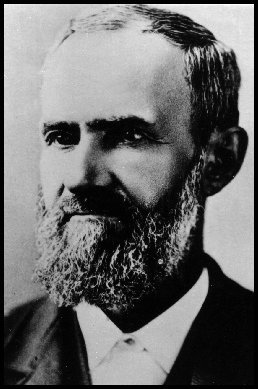Our retired librarian friend from Georgia, Bob Kobres, is always finding us interesting tidbits. Whether it’s hot off the presses new beaver research in phys.org or some historical gem that the world has long overlooked. This comes from a letter to the editor of Popular Science magazine in 1884. And it’s a whopper.
The author, one Samuel Aughey of Lincoln Nebraska, is responding to the May issue in which Dr. Stockwell wrote about Henry Morgan’s seminal book, “The beaver and his works“. He begins much in a familiar manner, saying it was a fun read but just because some researchers never saw something doesn’t mean it never occurs.
Rickipedia used to quote, “Absence of Evidence, isn’t evidence of absence“.
And then goes on to tackle the thorny debate about whether beavers use their tails in construction. Dr. Stockwell apparently said “No way”, but Samuel had other ideas.
Okay, did you get that? Samuel is minding his own business when he suddenly sees a group of beavers work together to move a trunk – some pulling some pushing. Already I’m intrigued because we never really saw beavers working together on a single log.
 So there’s a little rut in the hill and the beavers can’t get the log over it, no matter how many times they try. Time for a new strategy.
So there’s a little rut in the hill and the beavers can’t get the log over it, no matter how many times they try. Time for a new strategy.
 Okay! Beavers in a huddle form two teams, the pull team and the push team! The pull team LAID THEIR TAILS OUT FLAT and the log was rolled onto them. Then they hauled that log forward hoisted, as it were, by their own petards.
Okay! Beavers in a huddle form two teams, the pull team and the push team! The pull team LAID THEIR TAILS OUT FLAT and the log was rolled onto them. Then they hauled that log forward hoisted, as it were, by their own petards.
 Oompf! After that big log gets moved the pull team examines their tails to make sure they weren’t injured in the line of duty. Nope, all fine here.
Oompf! After that big log gets moved the pull team examines their tails to make sure they weren’t injured in the line of duty. Nope, all fine here.
 Samuel ends with “Just because they didn’t go to your fancy schools doesn’t mean what they saw didn’t really happen”. And by the way who is this wacky Samuel Aughey of the obvious “tinfoil hat” beaver brigade?
Samuel ends with “Just because they didn’t go to your fancy schools doesn’t mean what they saw didn’t really happen”. And by the way who is this wacky Samuel Aughey of the obvious “tinfoil hat” beaver brigade?
 Samuel Aughey Jr. was a minister and naturalist/ geologist in Nebraska and Wyoming from 1864 until 1886. He graduated from Pennsylvania College (now Gettysburg College) in 1856 and then attended seminary there. Aughey came to Dakota City, Nebraska, in 1864 as a “home missionary” for the Lutheran Church. After resigning this position in 1867, he worked for the Dakota County government from 1866 until 1869 as superintendent of public instruction and county surveyor. He was named the first professor of natural science at the University of Nebraska in Lincoln in 1871.
Samuel Aughey Jr. was a minister and naturalist/ geologist in Nebraska and Wyoming from 1864 until 1886. He graduated from Pennsylvania College (now Gettysburg College) in 1856 and then attended seminary there. Aughey came to Dakota City, Nebraska, in 1864 as a “home missionary” for the Lutheran Church. After resigning this position in 1867, he worked for the Dakota County government from 1866 until 1869 as superintendent of public instruction and county surveyor. He was named the first professor of natural science at the University of Nebraska in Lincoln in 1871.
Well okay, professor of natural science, superintendent of schools and county surveyor. But still we’re talking Nebraska and anyone that could read would be called a scholar there, right? Here’s a partial list of is publications:

Which all goes to leave me scratching my head in wonderment. Surely when there were millions more beavers they might have worked together differently. But did they use their tails differently? Samuel thinks that some beavers have better ideas than others. Not just any beaver could do it. Go read the whole letter to the editor here and puzzle for yourself if it could possibly be true.
There are more things in heaven and earth, Horatio,
Than are dreamt of in your philosophy.
Hamlet, Act I: Scene 5







 Jeff Nichols, City of Hutchinson public works maintenance/flood control superintendent, said a beaver dam has caused water to back up along the Cow Creek in this area in years past and it wouldn’t be atypical for it to happen again.
Jeff Nichols, City of Hutchinson public works maintenance/flood control superintendent, said a beaver dam has caused water to back up along the Cow Creek in this area in years past and it wouldn’t be atypical for it to happen again.






































